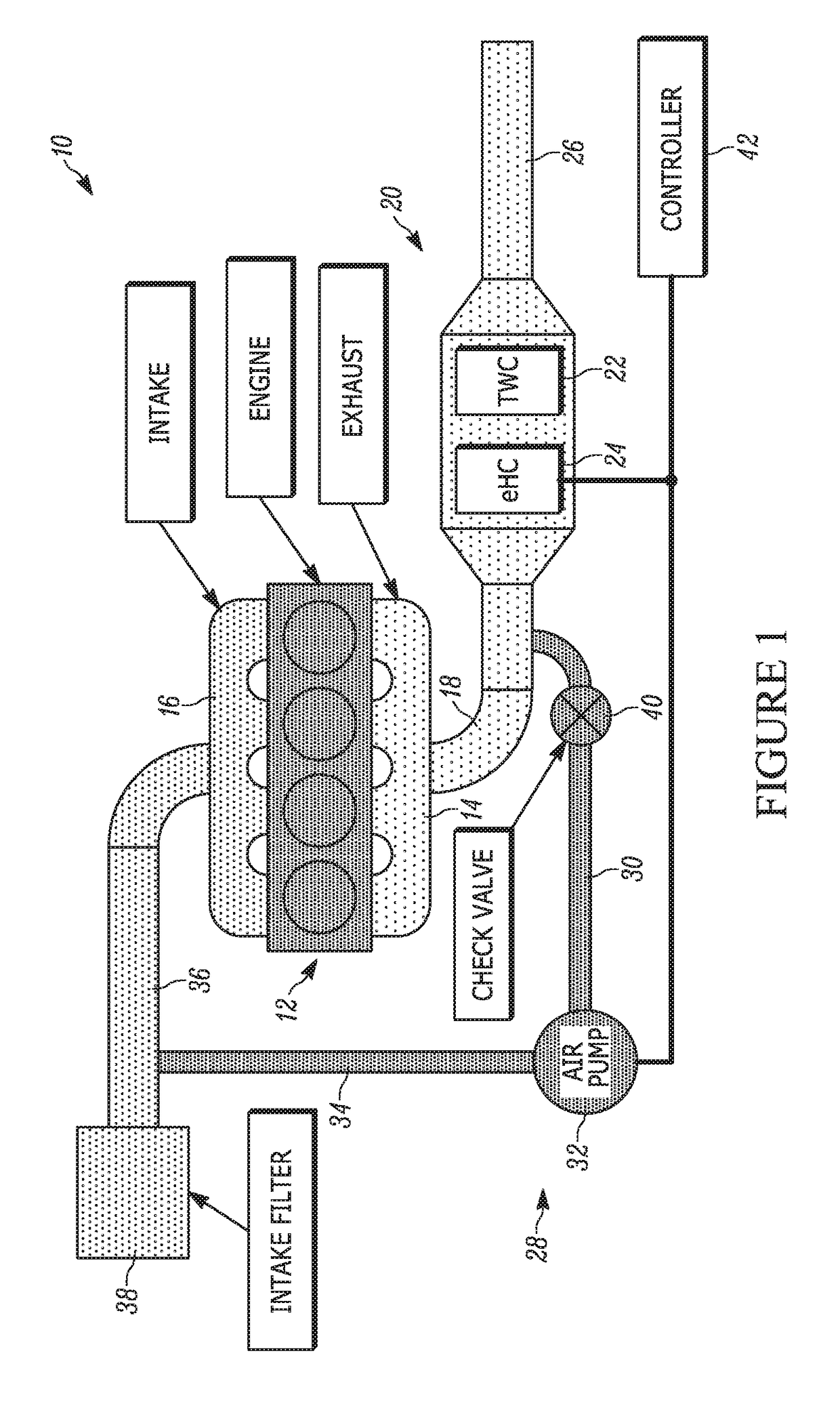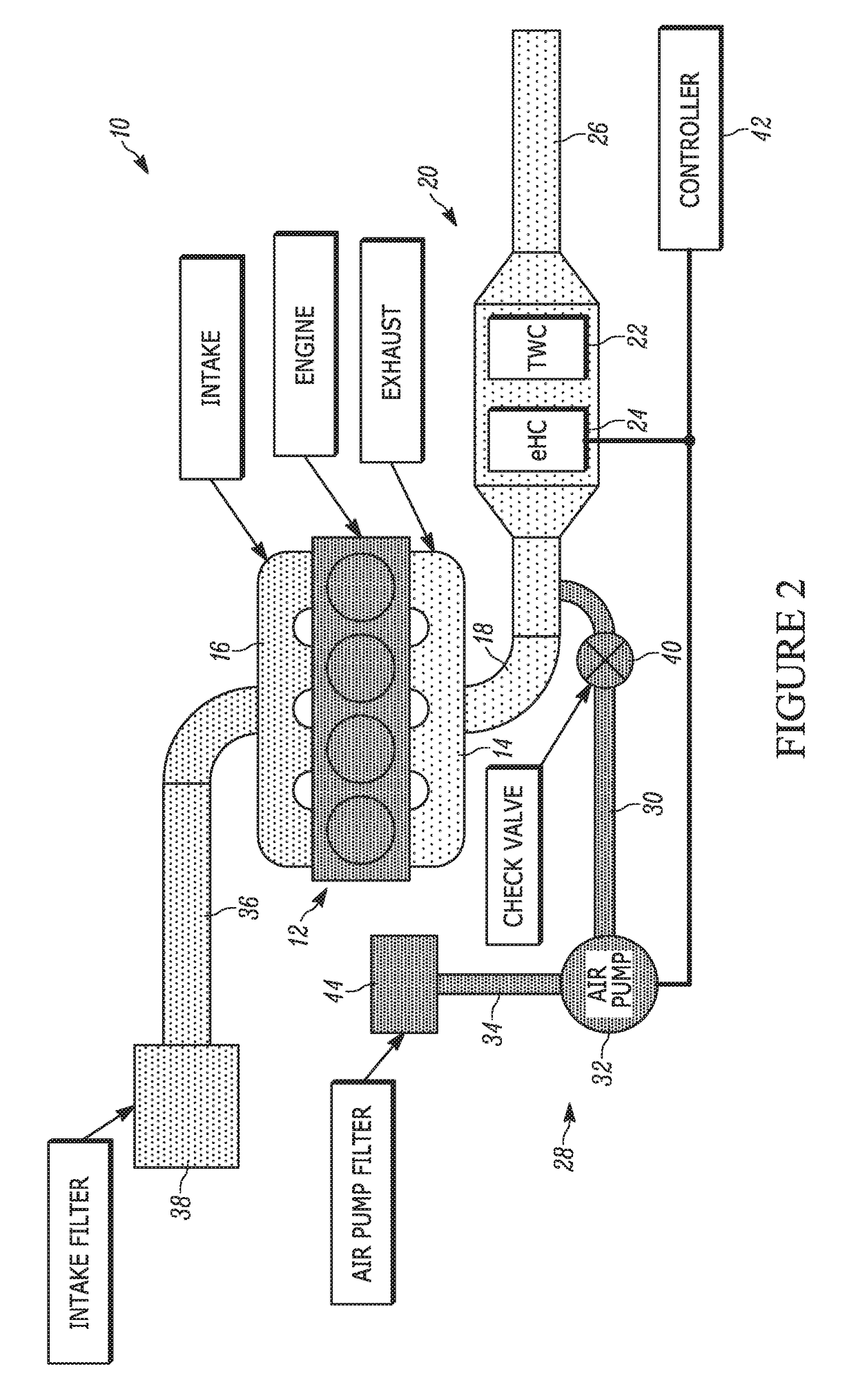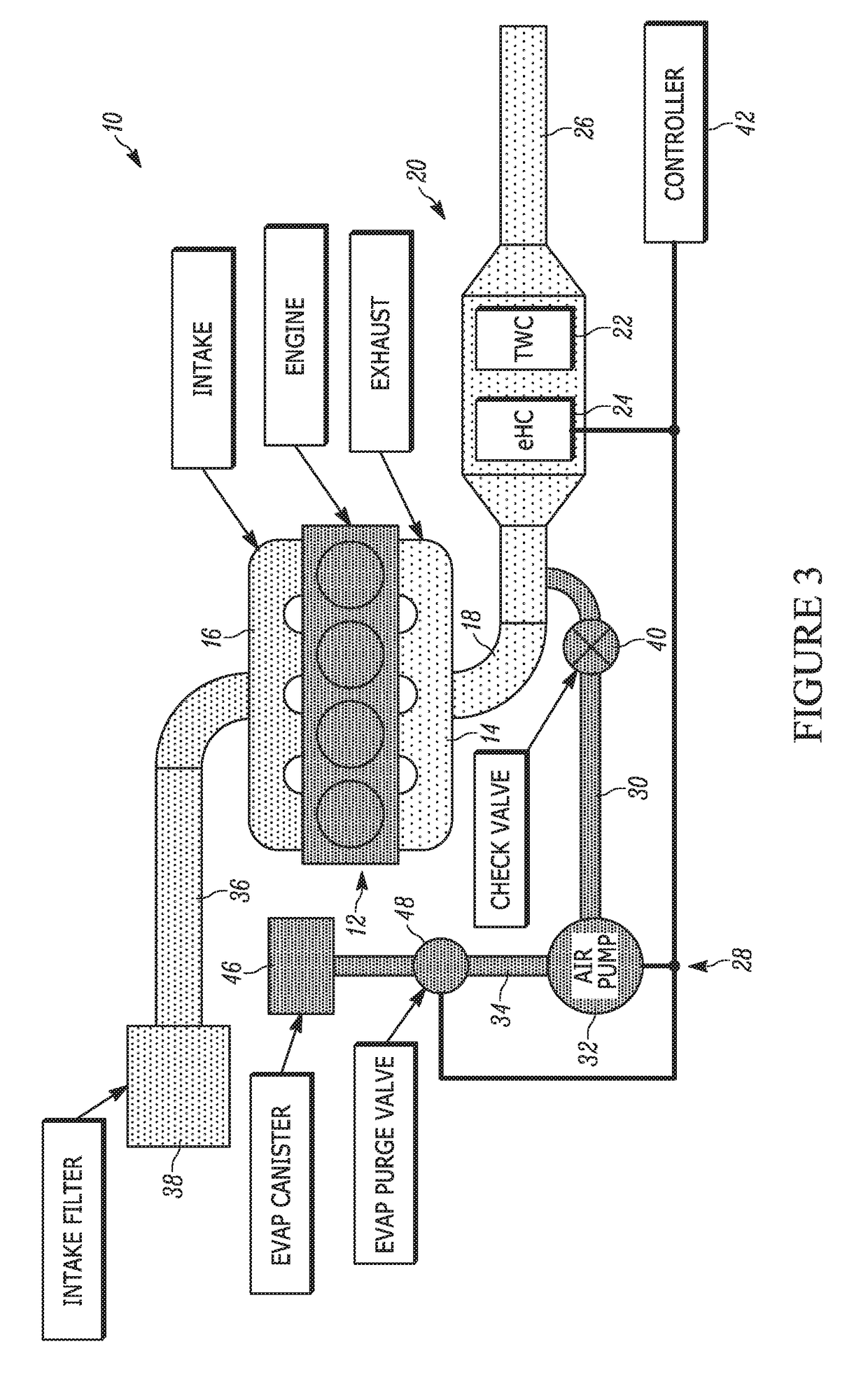Proactive catalyst heating
a catalyst heating and catalyst technology, applied in the direction of machines/engines, electrical control, separation processes, etc., can solve the problems of poor initial emissions, less effective catalysts at reducing emissions just after engine ignition, etc., to reduce harmful emissions, reduce the warm-up process, and reduce the time to light-off temperature
- Summary
- Abstract
- Description
- Claims
- Application Information
AI Technical Summary
Benefits of technology
Problems solved by technology
Method used
Image
Examples
Embodiment Construction
[0034]The following description of the preferred embodiment(s) is merely exemplary in nature and is in no way intended to limit the invention, its application, or uses.
[0035]A diagram of an exhaust system for an engine having a proactive heating system including a catalyst is shown in FIG. 1 generally at 10. The exhaust system 10 is connected to an engine, shown generally at 12. More specifically, the engine 12 includes an exhaust manifold 14 and an intake manifold 16. Connected to and in fluid communication with the exhaust manifold 14 is a front exhaust pipe 18, and the front exhaust pipe 18 is connected to and in fluid communication with an exhaust treatment device, shown generally at 20. The exhaust treatment device 20 includes a three-way catalyst (TWC) 22 and an electrically heated catalyst (eHC) 24. Connected to and in fluid communication with the exhaust treatment device 20 is a rear exhaust pipe 26.
[0036]Also shown in FIG. 1 is an air transfer device, shown generally at 28....
PUM
 Login to View More
Login to View More Abstract
Description
Claims
Application Information
 Login to View More
Login to View More - R&D
- Intellectual Property
- Life Sciences
- Materials
- Tech Scout
- Unparalleled Data Quality
- Higher Quality Content
- 60% Fewer Hallucinations
Browse by: Latest US Patents, China's latest patents, Technical Efficacy Thesaurus, Application Domain, Technology Topic, Popular Technical Reports.
© 2025 PatSnap. All rights reserved.Legal|Privacy policy|Modern Slavery Act Transparency Statement|Sitemap|About US| Contact US: help@patsnap.com



